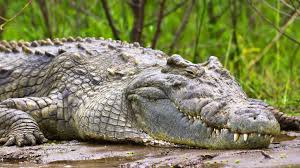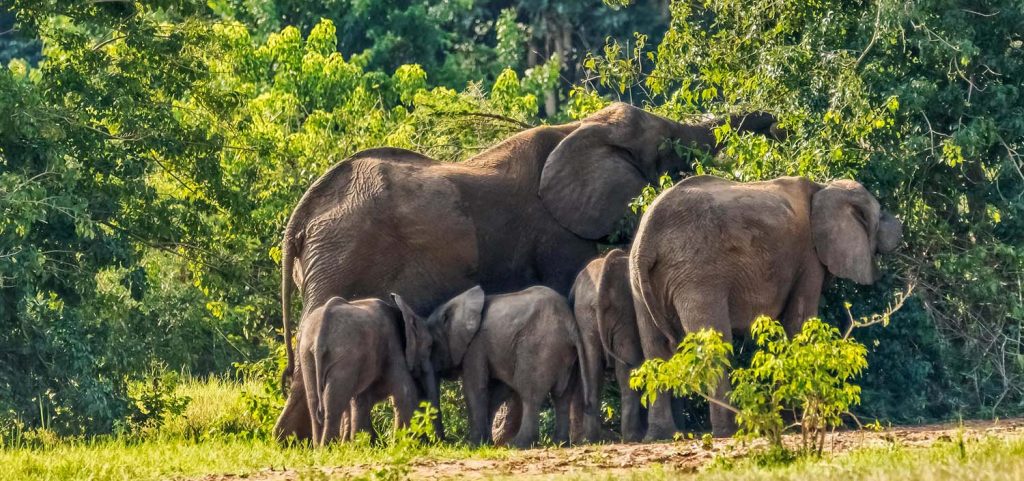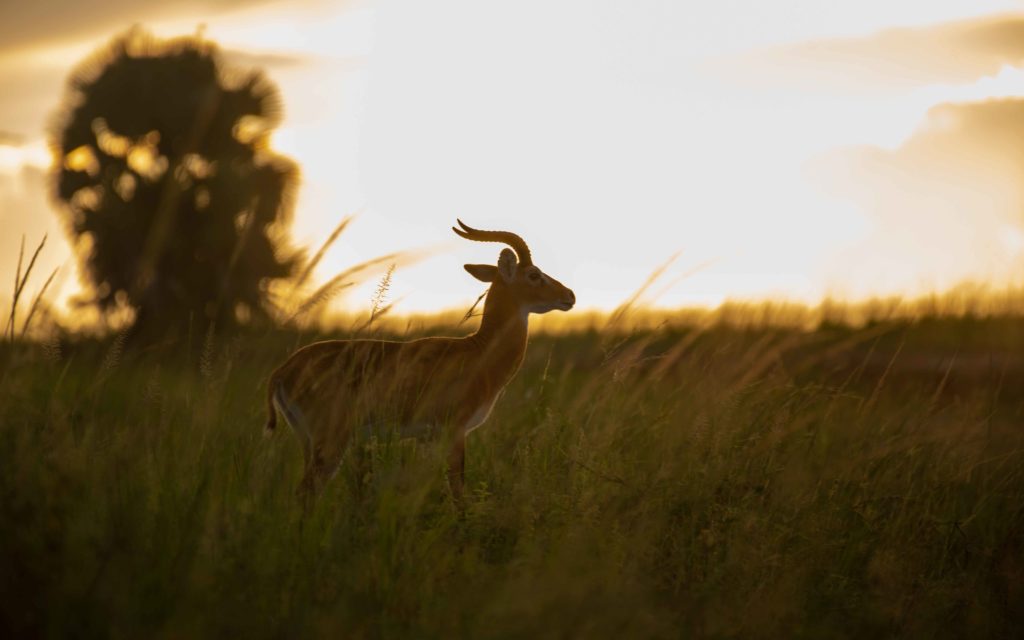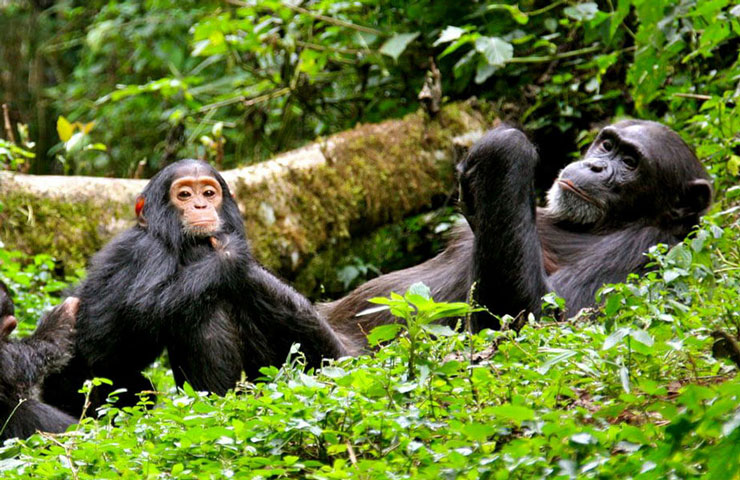Queen Elizabeth National Park,named after Queen Elizabeth II’s 1954 visit, lies in Western Uganda and is an astonishing 1978km², with Lake George in the north-east, Lake Edward in the south-west and the Kazinga channel connecting the two.
Queen Elizabeth National Park, in conjunction with Virunga National Park, is a Lion stronghold and Conservation Unit in Central Africa. The park is also famous for volcanic features such as cones and deep craters, many with lakes such as the Katwe craters.
The park is among the very best places in all of Uganda to spot many of the most sought-after animals that that you will be hoping to see.
There are 95 mammal species and over 600 bird species – perfect for an birding enthusiast, but it’s the sheer volume of some of these individual creatures that draws people to this location.
There are an estimated 5,000 hippos, 3,000 elephants, 10,000 Cape buffalo, and a significant amount of tree-dwelling lions, as well as ten primate species that include chimpanzees, Vervet and black-and-white colobus monkeys, and brazen baboons.
Queen Elizabeth National Park is the second most visited national park in Uganda attracting 28% of the tourists that come to visit.
WildLife
Vast numbers of hippos, elephants and buffalos live in the park, alongside warthogs, waterbuck, Uganda kob and topi, and the semi-aquatic sitatunga antelope.
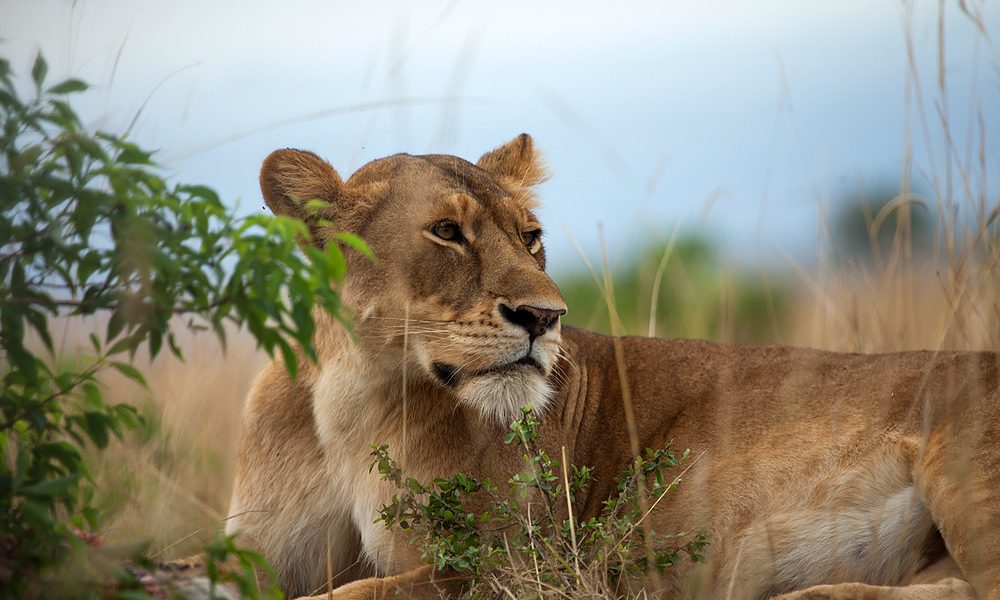
The park hosts big cats such as fig tree-dwelling lions in Southern Ishasha – leopard, civet, genal and serval cat. Solitary leopards are nocturnal and like to remain hard-to-spot!Smaller cats are also predominantly nocturnal and best spotted on night game drives.
No game drive is complete without catching sight of the park’s ten species of primate.
With over 600 species, there is no greater diversity of birds in all of Uganda, so merely being in the park gives you incredible scope for seeing creatures you’ve never seen before. Of particular draw are the Collared pratincole, Palm-nut vulture, Pel’s fishing-owl, Shoebill, Swamp flycatcher, Crab-plover, African hobby, White-winged tern and Caspian plover and much more.
Activities and Culture in Queen Elizabeth National Park
1.Launch Cruises
These trips that run on the Kazinga Channel go three or four times a day and run for two hours. They give you the opportunity to see creatures that visit the river like hippos, buffalo and elephants with the chance of seeing other up close.
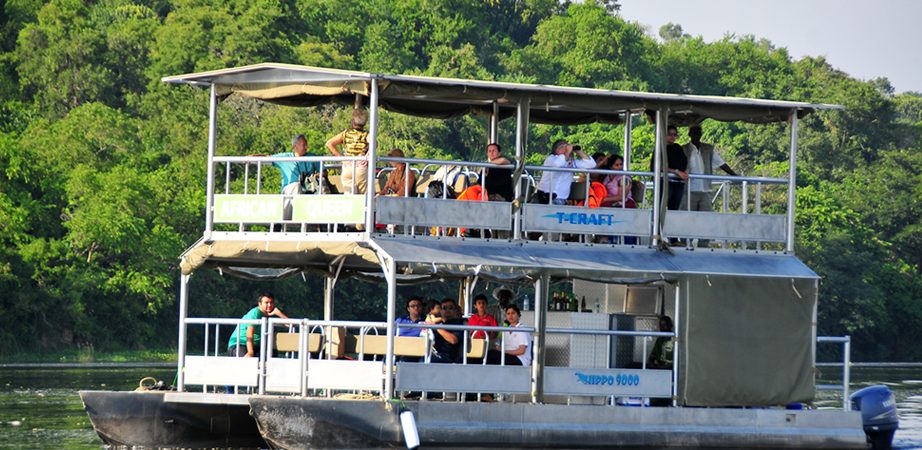
An average of 60 bird species are expected to be witnessed when travelling on the 40 seat aquatic vehicle. The whole experience is guided by the tour operatives who will talk in greater length about what you can see.
Leopard Village
This village borders the northern sector of Queen Elizabeth National Park. Visitors can tour replicas of tribal huts of Banyabindi, Bakonzo, and Basongora, watch song and dance and buy craftworks.
Long visits give you the opportunity to speak to community members about their challenges and what people can do to help. Leopard Village is a partnership between the local communities of Muhokya, Kahendero and Hamukungu, and the Uganda Carnivore Program, with support from zoos in the United States and Germany.
Chimpanzee Tracking at Kyambura Gorge
There is a lot more to these expeditions than simply catching a glimpse of our closest relatives.
There is a great deal to be learnt about the ecosystems of the Kyambura Gorge like the vegetation types, bird identification and behaviour and chimp and monkey ecology. Tours last between one and three hours and start at 8am and 2pm daily.
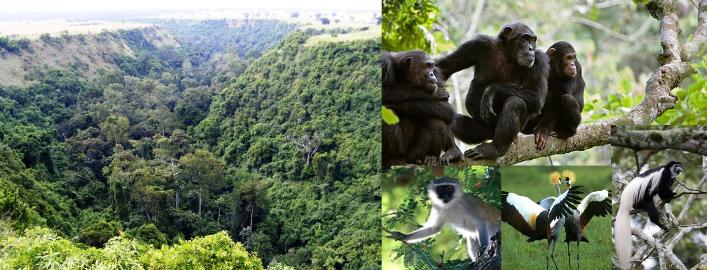
Cave Exploration
Nestled deep within the Maramagambo Forest is the bat cave. This viewing station in the Centre for Disease Control can be used to watch bats and pythons that live cohesively for the most part.
If you’re looking to learn a bit more about culture during this expedition, you can visit the historic cave at Nyanz’ibiri Cave Community, where a guide can explain how it was used to make sacrifices and cleanse misfortunes, as well as a hiding place from Idi Amin’s tyranny.
Katwe Salt Mines
Wildlife cannot really be supported by the unusually salty lake that bolsters this point, but it has supported the Katwe with the 16th century.
Katwe Salt Lake Tour gives insight into salt mining, an interesting but rigorous process that provides an alternative income for Katwe. You’ll see villagers crossing the mud walkways and enter the traditional grass huts.
You will also pass the nearby bird sanctuary lake, home to thousands of birds, including flamingoes from October to May.
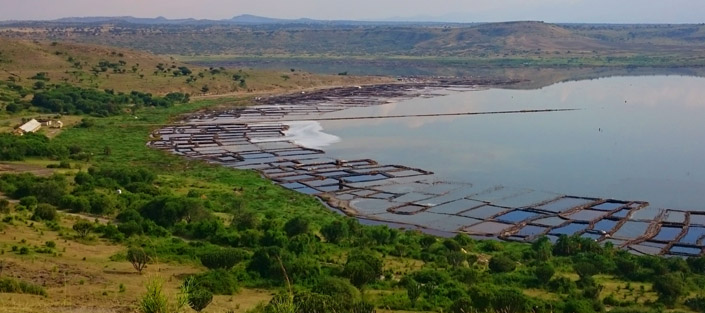
Kikorongo Women Community
The Kikorongo Equator Cultural Performers give vibrant performances at lodges around the park, and provide an engaging look into the life in Kikorongo, with dance, drama, music and fire-making. Kikorongo means “too much sunshine” in local dialect, which can be further explained by the local guides.
You can also be taught how to weave baskets, recycle magazines and other materials and generally be ecologically productive.
Agro-Tour Walk
The Agro-Tour Walk is a 2-3 hour tour of Kataara Village through the farmland where people can learn about the enduring issues of living in close proximity to exotic species and attempts to prevent conflict between man and beast, like keeping bee colonies to prevent elephant species from grazing on their produce.
Getting there
Roads
two route run from kampala to mweya ,the primary tourism hub in QENP .The most scenic route passes through fort portal (410k) and offers detours to kibale,semuliki ,and Rwenzori montains national pars .the alternative (420km) runs through mbarara and bushenyi and passes lake mburo national park .QENP southerly ishshs sector is directly on the main route to / from buhoma ,the main mountain gorilla tracking trailhead in Bwindi impenetrable national park ,which lies 62km south
Air
Charter flights can be arranged to airstrips at kasese ,mweya and ishasha
Gallery
